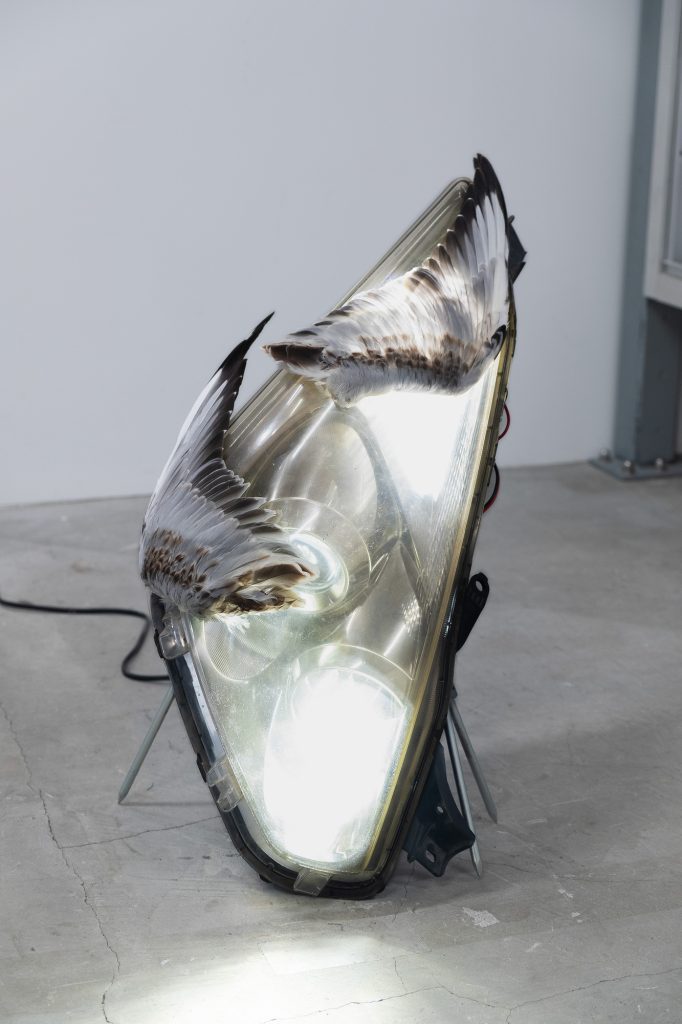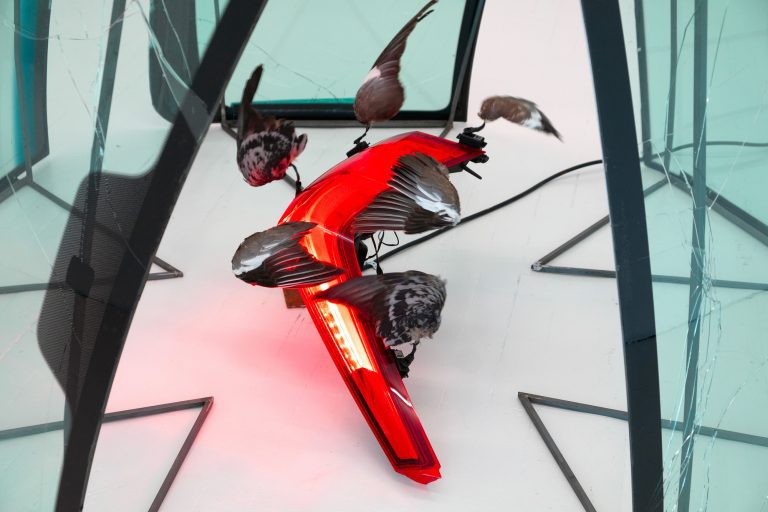
Siren, 2022

Auto Wing XII
Hanna Antonsson, a Swedish artist based in Gothenburg, transforms the remnants of roadkill and car parts into evocative sculptures that challenge our perceptions of life, death, and rebirth. With a background in photography and a fascination with the natural world, Antonsson’s work blends taxidermy with elements of technology, creating hybrid forms that tell stories of a post-humanist coexistence. Her Auto Wing collection, among other works, invites viewers to reflect on the collision between nature and machine, offering a poignant commentary on sustainability and the future of art.
hube: Glass, car tyres, feathers. These are the words that can describe your recent work. The pieces from your Auto wing collection are like portals to a world where nature teaches machines the art of flight. What inspired you to create them?
Hanna Antonsson: One way or another, I’ve always worked with animals in my art. I have my base in photography and have always stopped to photograph a run-over squirrel or badger by the roadside. Being close to a wild animal and seeing its fur or feathers has always been magical for me. I think it’s the child in me who used to conduct elaborate funerals in our garden for the birds that had struck the windows. At some point, I started to collect them to incorporate them into planned photoshoots in more controlled environments, eventually focusing solely on birds.
When I went to pick up these roadkill birds, I inevitably became affected by the very substantial human-inflicted death in front of me. On the same roadsides where I found dead birds, there would also be remnants of car parts, like worn-out tyres or a crushed bumper. It made me think about the afterlife of the bird but also the crushed car, more as an object rather than the person driving it. So, I started to fuse these two materials to create an alternative afterlife for them as a hybrid. Now I explore these materials in different shapes and forms.
h: Wings, symbols of freedom and flight, soar boldly in your artwork, from photography to sculpture. Why do wings hold such great artistic significance for you?
HA: It started as a fascination with the shape wings have. I love flower petals, scales and the shapes of bugs. I have the same feeling for big construction site machines, metal skeleton constructions and robot arms. In many ways, a bird wing has a little of all of these traits in one. I just love the intricate patterns of a feather and how it works for the animal in flight. It’s basically just awe for nature. When I first started working with it, I opened up a broad world of different symbolic meanings. The wing as a symbol feels almost seared into the human consciousness and has had cultural significance from ancient Egypt to Goodyear tyres.

